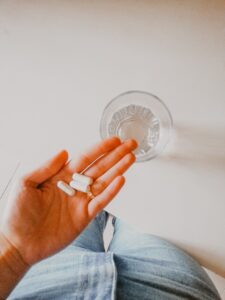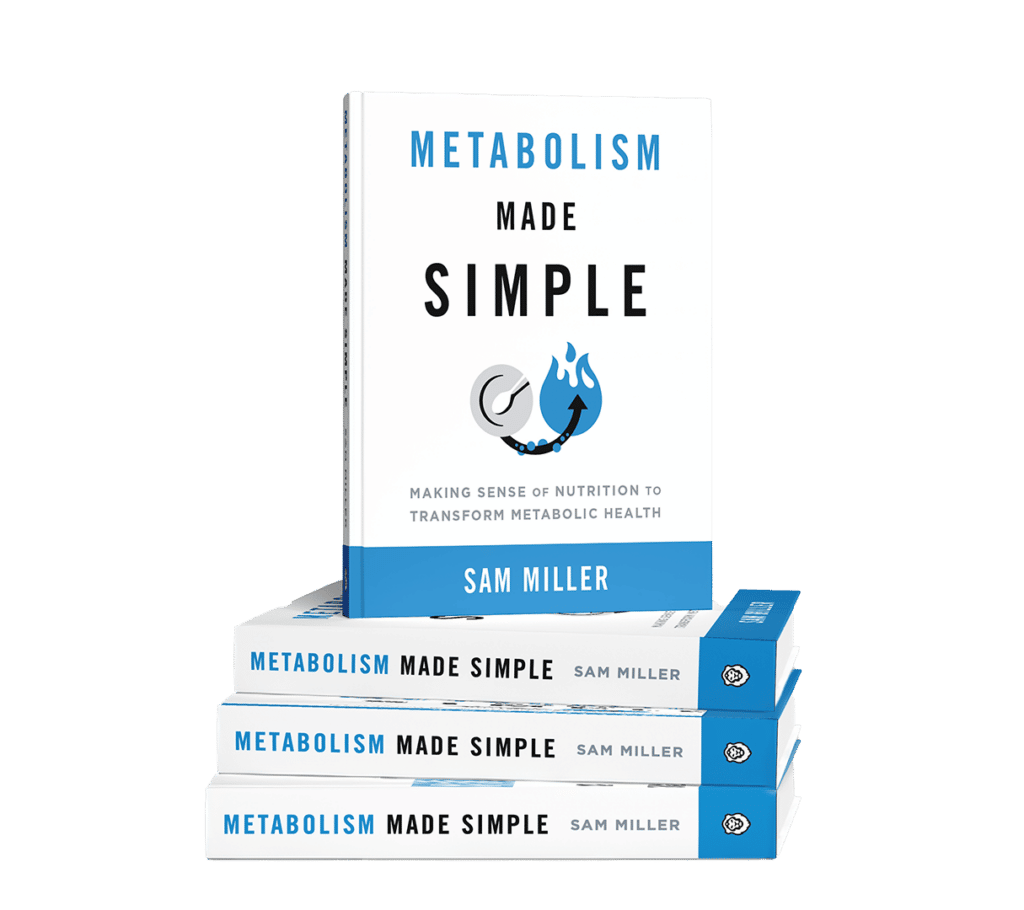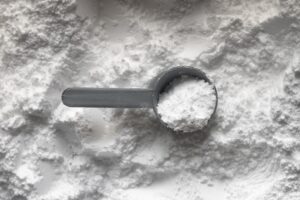Introduction
The human body is an incredibly complex organism with an amazing amount of moving parts that need to be functioning optimally to keep us thriving. You could think of it almost as a complex city.
There needs to be communication between different entities and organizations within the city to keep things going. If there’s several potholes in a main road, someone communicates that to the city who communicates that to organizations who go out and fix those potholes.
There’s a lot of different communication elements going on and our body is no different – Every organ is constantly sending signals to other organs and communicating with each other to keep everything in concert.
One of these messenger systems is our endocrine system, which is basically the name for our collective hormone system. So today we’re going to be breaking down the basics of our hormones and how they act as a messenger system. We’ll go into:
- A quick analogy of the body’s messenger systems to help you better understand hormones
- What are hormones?
- Basic levels of hormonal control
- Types of different hormones
- Steroid vs. peptide vs. others
- Key differences between the classes and how they exert their function and effects
- Touching on the adaptive capacity of hormones
Understanding Hormones and Messenger Systems
Given that so many things must work in concern with one another within the body to keep us living and thriving, one has to wonder how each organ knows what the other is doing, or how the brain actually controls this concert as sort of this central conductor.
The answer is that our organs send “messages” to either themselves or other organs to help communicate and keep this concert going.
The 2 Main Messenger Systems and the Mail Analogy
The body has two main messenger systems – electrical and chemical. The chemical system is our hormonal or endocrine system and while we’ll be focusing on that today, it’s good to illustrate how each works to be able to understand.
The electrical system works through electrical impulses sent down nerves, while the chemical system depends on chemicals released from glands that travel to other organs, giving them some sort of instruction. This system is very important, but a lot slower than the electrical system.
You can think of the electrical system like email: nearly instantaneous communication. Whereas the chemical system, a bit slower, can be thought of like old school postage. You write a letter, and it goes through multiple channels and waypoints before it reaches its recipient, who will be affected in some way by your letter.
Maybe you asked them a favor, maybe you consoled them for some reason, or maybe you thanked them for some reason. Either way, this message is going to prompt some sort of action or response from them.
The Endocrine System
The endocrine system acts as our chemical messenger system; our snail-mail. Whenever you hear the word, “endocrine” you should think of hormones, and when you think of hormones, you can think of these as little messages released from one organ, floating through different highways of the body, such as the bloodstream, to another organ to deliver a message. Organs that release these hormones are called endocrine glands.
For example, the pancreas is an endocrine gland that senses blood sugar levels, and when high, it releases insulin, a chemical message that when it reaches muscle tissue and fat tissue, instructs them to open the door to let blood sugar inside.
These hormones control so many aspects of our biology and behavior through our day to day, but also throughout our lifespan. They control our growth and development (puberty as an example), how our body handles the food we take in, our energy, our sleep, our recovery, even how our neurotransmitters are firing (mood and behavior).
Women: These are some reasons why you may get bloated or crave certain foods around that time of the month.
Men: This may be one of the reasons that, as you age, your recovery capacity may start to decline, libido might start to get lower, and overall energy isn’t as good.
When most people think of the brain, they probably think of electrical signals. After all, the brain is part of the central nervous system and “nerve” is right in the title.
However, the brain is a hub for chemical release as well and controls numerous different hormones. We’ll dive into a few of those a bit later, but let’s talk some more basics about hormones, namely how they’re released.
Basics of Hormone Control
A large proportion of hormones in the body work on what’s called a “negative feedback system” in some fashion.
You have organs that sense changes in the body and respond by releasing either a hormone, or a cascade of molecules that ultimately ends in release of that hormone.
Once enough of that hormone is in the bloodstream, then the brain or another organ senses that, and stops releasing that hormone. In some cases, the organ senses that the hormone has done it’s job by sensing other physiological changes, and it stops secreting that hormone, so it’s basically a loop.
Thermostat Analogy
The analogy here would be a thermostat. You set the thermostat in your house to a certain temperature, say 68 F. If it’s the summer and we’re looking for AC, if the ambient temperature jumps above 68, the AC kicks on until the internal temperature is 68, and then it kicks off.
In this analogy, the thermostat is the part of your brain that senses hormone levels. If hormone levels drop, the brain releases “releasing hormones” to facilitate more hormone release from the respective gland.
Thyroid Example – For example, for thyroid hormones, if your body has low levels of thyroid hormone, a center in the brain called the hypothalamus senses this and releases a molecule called TRH; Thyroid releasing hormone.
This hormone travels to the anterior pituitary gland, which then releases TSH; Thyroid stimulating hormone, which then travels to the thyroid gland and causes it to produce T4.
When enough thyroid hormone is in the bloodstream, the hypothalamus senses this and stops secreting TRH, ultimately ending new thyroid hormone production for the time being. This is an example of the hormone feeding back and stopping release of itself.
Insulin Example – A different example would be insulin, which I mentioned before. In this case, its not necessarily the level of the hormone that feeds back, its another biological signal: Levels of blood glucose.
In this case, cells of the pancreas sense high blood sugar, and then it releases insulin to get sugar out of the bloodstream. Once the cells of the pancreas sense that blood sugar is in a good range, it stops secreting insulin; so the feedback signal here is that blood sugar is in optimal range.
Different Types of Hormones
Lets start broad; there are many different classes of hormones, but a few of the more common ones (and one’s we’re interested in) are steroid, peptide, and tyrosine-derivative.
Steroid Hormones
I know when you hear the word “steroid”, you’re probably thinking of PEDs, bodybuilders, etc, but “steroid” just refers to the structure of the molecule, and there are many different types of steroid hormones.
Synthesis and Regulation
All steroid hormones are synthesized from cholesterol. Either from your diet or what’s being synthesized in your body. This fact makes them almost lipid or fat-like. They’re not very soluble in water (think about a vinaigrette and how the oil separates from the water) and thus generally need transport or binding proteins in order to travel through the bloodstream.
Steroid hormones act by actually going through cell membranes and into the nucleus of cells where the DNA is and generally actually change the transcription patterns of our DNA.
Steroid hormones also use binding proteins as an extra level of control. When a steroid hormone is bound to its binding protein, it can’t exert its effects at the target tissue. It’s basically inactive at that point.
The creation and synthesis of steroid hormones takes a bit longer than peptide hormones, so they can’t exactly create and release as fast as they body might need.
The body has a work-around by creating a larger amount of it and having it attached to a binding protein for regulation. All the body needs to do is release it from the binding protein to have it exert its effects.
Peptide hormones are a little different in that regard; the majority of peptide hormones do not have specific binding proteins (there are a couple exceptions), so they are just released from the organ upon physiological demand.
Getting back to steroid hormones and cholesterol; this is one of the reasons why we don’t want to follow a diet that’s too low in fats or cholesterol for an extended period of time. As I briefly mentioned, we get our cholesterol from our diet, but our body also synthesizes cholesterol as well.
A diet that’s higher in certain saturated fatty acids will ramp up our endogenous synthesis of cholesterol, so if we eat too low of fats or cholesterol for an extended period, we wouldn’t have cholesterol coming in, and we also hurt our ability to create cholesterol, which may downregulate steroid hormone production.
Studies show that when diets are at or below 20% fat for an extended period, this will hurt sex hormone production in both men and women.
The Path from Cholesterol to Hormone

Lets travel the path from cholesterol to a hormone. First, cholesterol is used to make a “parent hormone” called pregnenolone, from which all other steroid hormones are made.
Then from pregnenolone, the other steroid hormones are made – The next two broad classes are corticosteroids and sex hormones.
Corticosteroids
Corticosteroids are mainly made in the adrenal glands, specifically the adrenal cortex (thus the prefix cortico-), and then travel throughout the body to exert their effects.
There are two main ones we should put our attention to, and many of you are probably familiar with one of them: Cortisol. It’s one of the primary regulators of our stress response, it’s what makes us wake up in the morning with energy, it is heavily modulatory of the immune system, and it manages how we deal with the food we eat – I.e. how we metabolize carbohydrates, fats, and proteins and also how we store or burn them.
Cortisol works on the negative feedback system we mentioned earlier. Once cortisol builds up to a level in the bloodstream that the brain deems is appropriate for the current conditions, it stops sending signals to release more.
In the next part of the metabolism series, when we start talking about what metabolism actually is, we’ll dive a bit deeper into what those “current conditions” actually are, how they change, and how hormonal responses can change.
Another corticosteroid we should pay attention to would be aldosterone. This is a hormone that’s largely responsible for electrolyte and water balance in the body, which has a downstream effect of regulating blood pressure, for example.
Sex Steroids
Sex steroids are generally created from pregnenolone in the gonads; testosterone for men, and estrogen and progesterone for women. There are some nuances, like testosterone in women is made in various locations including the ovaries and adrenals, and estrogen in men is mainly made from conversion of testosterone into estrogen, but in general the gonads are the sites of sex steroid synthesis.
These also operate on a negative feedback system; when the brain senses there’s enough for our current conditions, it stops sending signals to produce more. Again, we’ll talk more about what those conditions are in the next post, and how they change and adapt.
Peptide Hormones
Another class is peptide hormones, which are hormones made from chains of amino acids, kind of like proteins. These do mix well with water, and aren’t fat-like like steroid hormones are, so they can travel easier through the bloodstream and don’t necessarily require binding or transport proteins.
They generally exert their effects not by going into the cell, but by binding to receptors on the cell surface, which causes signaling cascades within the cell.
We can think of our insulin example from earlier when it comes to this. Insulin binds to the receptor on a muscle cell surface, and a cascade of signals happens within the cell and the end result is a channel, or door, coming to the cell surface to let glucose inside.
We have many more peptide hormones in the body than we do steroid hormones, but we won’t dive into all of them – theres around 20+ total.
All of the “releasing hormones” or the hormones that signal the release of active hormones, are peptide in nature. In our thyroid hormone example from earlier, TRH and TSH are peptide hormones. Remember, these are the hormones that come from the brain to tell the thyroid gland to synthesize and secrete thyroid hormone. The two hormones from that brain that signal cortisol release from the adrenal cortex, CRH and ACTH, are both peptide hormones as well.
Some of the more well-known peptide hormones you might recognize are insulin, glucagon, leptin, ghrelin, and growth hormone. We won’t be diving into each individual hormone’s function here, as this is not the post for that; we’re just exploring the broad concept.
Key Difference Between Peptide and Steroid Hormones
A big key applicable difference in steroid vs. peptide hormones are in cases where people might have to take them as medications. If you think about it, you can take oral versions of steroid hormones. Thyroid hormone comes in pill form, birth control, although not bioidentical to estradiol and progesterone, is still steroid in nature, and comes in oral forms.
However, since insulin, growth hormone, and others are peptide in nature, if you took those in a pill, the stomach would just break it down and “digest” it into its individual amino acids just like it would other proteins. As of now, those are only injectable. I do believe as of 2020 there are companies that are working on special oral versions of insulin, but I’m not sure how far along in production that is.
Tyrosine Derivatives – Thyroid Hormone
Thyroid hormones are in a different class called tyrosine derivatives, but thyroid hormones actually share some commonalities with steroid hormones in the fact that they have binding proteins in the blood, and also exert their effects by traveling into the nucleus and binding DNA.
When we examine levels of control, we can see many levels of control with thyroid hormones. The creation of thyroid hormone needs signaling, but once thyroid hormone is created, it’s not actually the active version of the hormone; it’s T4.
T4 can be bound to binding proteins in the bloodstream, not allowing it to enter tissues, but even further than that, once T4 is released from its binding protein, it has to be converted to T3 at the tissue level, which is the actual active version of thyroid hormone.
T3 can also be bound to binding proteins, and a molecule called reverse T3 can also be created to prevent T3 from exerting its effects as well.
We’ll dive into why that might happen a little more in part 2, but this extensive level of control signals just how important thyroid hormone is, but also how deleterious to physiology it can be if levels go too high or too low.
The Adaptive Capacity of Hormones + Summary
The collective actions of all of our hormones can be thought of as a very large part of what makes up our metabolism.
Some hormonal systems are one hundred percent necessary for life. If we were to be completely deficient in them, we’d be dead pretty fast. Insulin, glucagon, cortisol are good examples of this.
If we had zero levels of those hormones, we’d be dead within minutes to hours. If we had zero thyroid hormone, we’d also die, but it would be over a bit of a slightly longer time course.
However, when it comes to sex hormones, they basically govern our reproductive capacity, which isn’t necessary to our own life, per se. We can have extremely low levels or be nearly deficient in these and still live, although not live well and healthily.
As I mentioned earlier, the actions of our hormones are largely dependent on our surroundings and our environment. Our sensing systems are constantly surveying the environment, and as those systems sense changes, our hormones change and adapt.
They might change the levels of hormones that are being secreted, they might change the amount of hormones that are bound to binding proteins, or they might undergo other adaptations.
This will be largely the subject of the next post: What metabolism actually is, how it adapts to its surroundings, and how we can change our habits and environment to optimize our hormones.
















